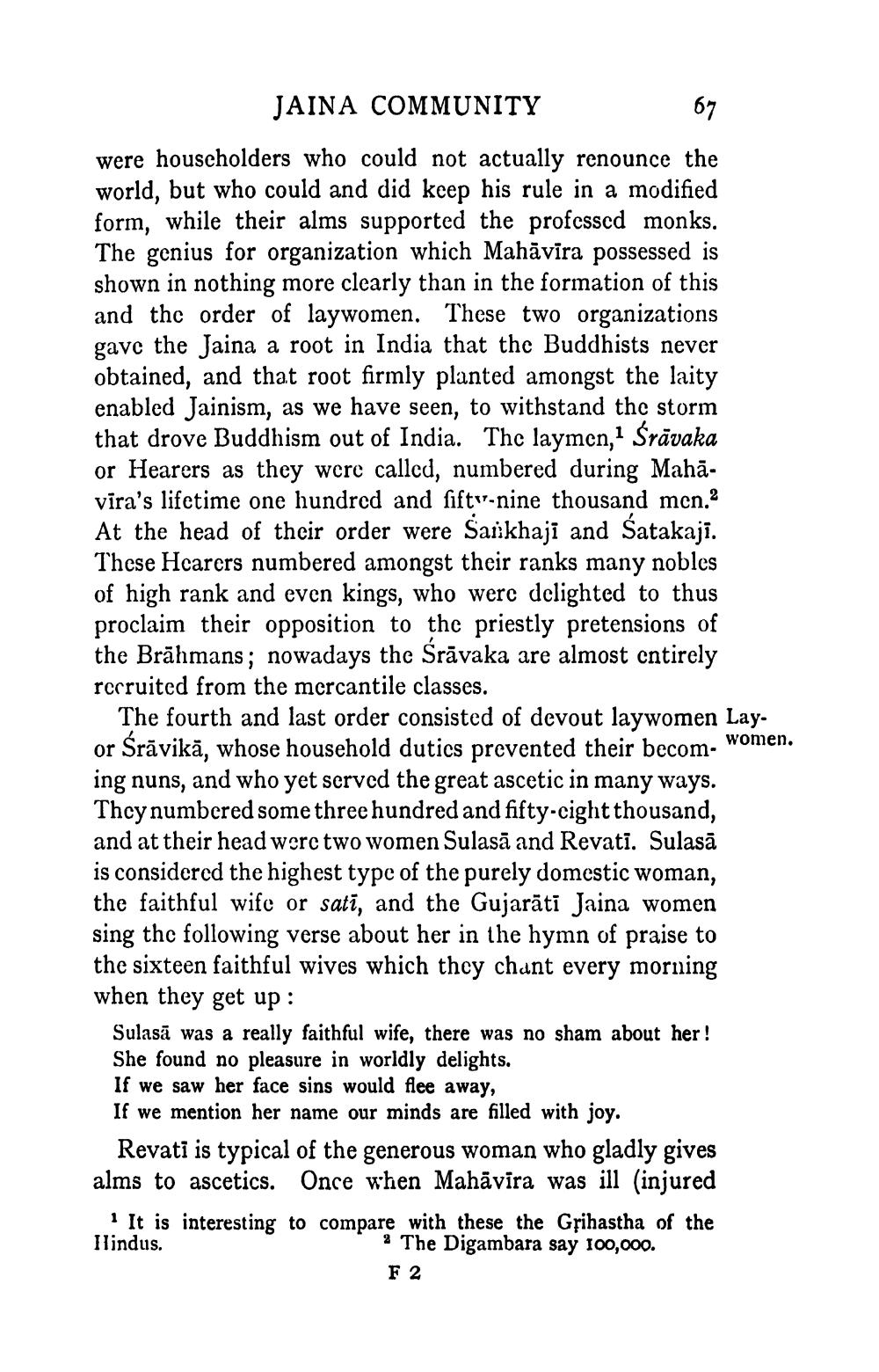________________
67
JAINA COMMUNITY
were householders who could not actually renounce the world, but who could and did keep his rule in a modified form, while their alms supported the professed monks. The genius for organization which Mahāvīra possessed is shown in nothing more clearly than in the formation of this and the order of laywomen. These two organizations gave the Jaina a root in India that the Buddhists never obtained, and that root firmly planted amongst the laity enabled Jainism, as we have seen, to withstand the storm that drove Buddhism out India. The laymen,1 Śrāvaka or Hearers as they were called, numbered during Mahāvira's lifetime one hundred and fifty-nine thousand men.2 At the head of their order were Sankhaji and Śatakaji. These Hearers numbered amongst their ranks many nobles of high rank and even kings, who were delighted to thus proclaim their opposition to the priestly pretensions of the Brahmans; nowadays the Śrāvaka are almost entirely
recruited from the mercantile classes.
women.
The fourth and last order consisted of devout laywomen Layor Śrāvikā, whose household dutics prevented their becom ing nuns, and who yet served the great ascetic in many ways. They numbered some three hundred and fifty-cight thousand, and at their head were two women Sulasã and Revati. Sulasā is considered the highest type of the purely domestic woman, the faithful wife or sati, and the Gujarati Jaina women sing the following verse about her in the hymn of praise to the sixteen faithful wives which they chant every morning when they get up:
Sulasă was a really faithful wife, there was no sham about her! She found no pleasure in worldly delights.
If we saw her face sins would flee away,
If we mention her name our minds are filled with joy.
Revati is typical of the generous woman who gladly gives alms to ascetics. Once when Mahavira was ill (injured
It is interesting to compare with these the Grihastha of the Ilindus. 2 The Digambara say 100,000.
F 2




